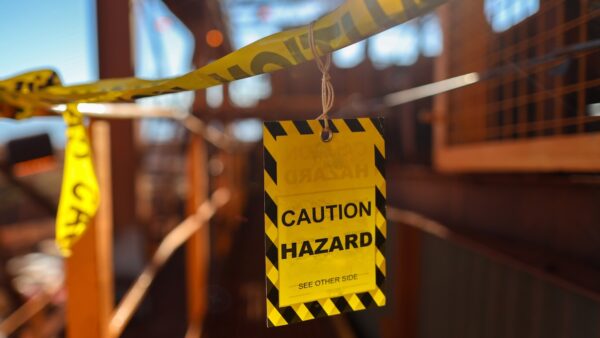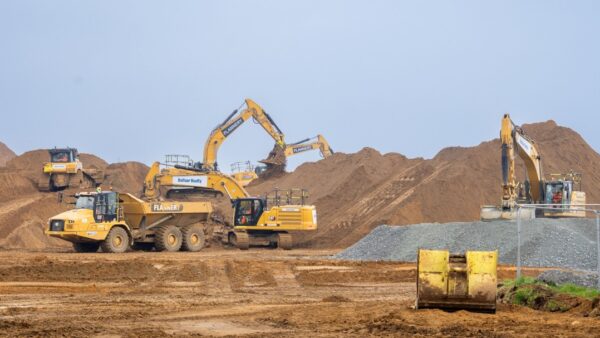
Housing associations trying to set up a ‘golden thread’ of asset information are beginning to think differently about how they interact with customers. Denise Chevin finds out more from Chris Lees, chief executive of tech consultant Dataclan and a member of the BRAC Golden Thread Working Group
he need to develop digital repositories of information about their housing stock is having a galvanising effect on housing providers. It has encouraged the more forward-thinking to explore how sharing data across asset management, housing management and development can benefit their residents while also streamlining their operations.
At the centre of this drive is data standards specialist Chris Lees, who is working with several housing providers to develop systems that link together information from different departments.
Lees has been collaborating with other data standards through buildingSMART and the UK BIM Alliance. He began working in housing with projects for the Housing Associations’ Charitable Trust (HACT).
“I noticed that the various departments in housing tend to work in silos,” he explains. “But people have started to say: instead of thinking about housing management and assets, let’s think about the customer. Any housing provider will tell you, if you’re looking at customer satisfaction, the number one problem that customers will report is repairs. So that brings together the asset world and the housing management.”
The demands of the Building Safety Bill for a golden thread of information, and housing providers’ own desire to ensure the safety of residents in the aftermath of Grenfell, is driving the desire to use data better.
Golden Thread Working Group
Lees is a member of the Golden Thread Working Group of the Building Regulations Advisory Committee (BRAC), which is establishing protocols for the
golden thread. But he stresses we don’t know yet precisely what the full and final details will be.
“Putting aside for a minute what the legislation says, the problem we’re trying to solve is to keep people safe and to do that we need to be able to rely on the information that we have about the building,” he says. “In many cases, we either don’t have that or it’s impossibly hard to find.”

“You have got to get those data models right. And you’ve got to make sure that the systems you’re using are using those data models.”
Lees points to the “crazy” situation where project building information is handed over in boxes full of files to the client, which then commissions a surveyor to tell them what’s in the building: an enormously expensive and evasive process.
He stresses the importance of handing over design and construction information to the client in a digital and structured format, using the standards prescribed in the BIM standard ISO 19650: OSCRE, IFC or COBie. That also means setting out these essentials in employer’s requirements.
Lees notes: “I have demonstrated that actually IFC and OSCRE standards are interoperable – so if the construction team is using IFC and the client is using OSCRE, that’s fine.”
If housing providers are to harness their data to boost safety and join up ‘customer functions’ with ‘asset type functions’, then standardising data internally is also important.
Fire safety flagged up
Lees paints a future scenario of how asset and customer data can combine to boost safety: “If a customer rings up to report a door is not closing, the customer service agent should be able pull up details about that person’s home in 3D. Through a simple triage process, they can establish which fire door the customer is referring to and establish if it’s a critical part of their fire safety system.”
Collating all this information is starting to happen on new build, but Lees knows this will take longer for existing housing. With organisations he is currently working with, including Hyde and BIM4Housing Associations, this means building structures for data.
“You have got to get those data models right,” he asserts. “And you’ve got to make sure that the systems you’re using are using those data models. And then get machines to the heavy lifting and make sense of such large amounts of data.”
He adds: “This is the big cultural shift. There’s a mindset that thinks information management is about allowing people to find the data they want. But that’s only a part of the solution. When customers log a repair, we need to know if it’s part of a fire compartment, who installed it, when it was last inspected, and we know where the certificate is for its commissioning.”
Machine learning
If AI is to be part of the solution, again it’s about getting data in a standardised format so that it can be read by a machine, says Lees.
As part of this transition, he says housing associations need to upgrade their software, developing their own systems with suppliers, or, increasingly, adapt application platforms like Microsoft Dynamics to their needs. Cyferd, a ‘low-code/no-code’ platform, is partnering with one of his housing association clients.
The social housing sector is still in the early stages of its digital information journey, Lees believes.
“A lot of the medium-to-large housing providers are addressing the safety challenge very effectively. People know that they’ve got a tonne of work to do. There is some anxiety about getting it all done fast enough.
“I worry for the smaller housing providers, who still may have high-rise in their portfolio, who are not going to have the resources to buy and customise solutions like Dynamics 365. They will be relying on suppliers, some of whom are making extraordinary claims, such as their software is ‘compliant with the golden thread for building safety’. But as we know, this has not even been defined yet.”











